#Gabrielle Hodge
Explore tagged Tumblr posts
Text
March-April 2023: Bluesky, Barbie bouba/kiki, and Bea Wolf
My newsletter for March-April 2023: Bluesky, Barbie bouba/kiki, and Bea Wolf
In April, I made an account on bluesky and enjoyed some wordplay there, which is still (so far) going strong as a twitter replacement. The main episodes of Lingthusiasm these two months were Bringing stories to life in Auslan – Interview with Gabrielle Hodge, which was our second bimodal bilingual episode, this time in Auslan and English, as well as Tone and Intonation? Tone and Intonation! The…
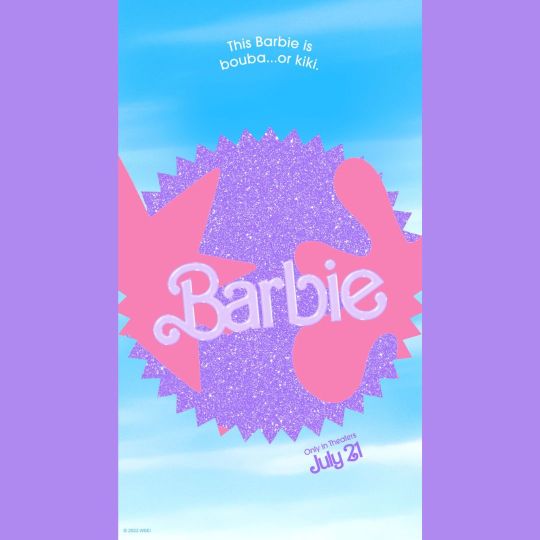
View On WordPress
#Auslan#blog#bluesky#book reviews#bouba kiki#Gabrielle Hodge#internet linguistics#interviews#kiki bouba#lingthusiasm#linguist humor#PIE day#podcasts#speculative fiction#tweets#twitter
27 notes
·
View notes
Text
Transcript Episode 78: Bringing stories to life in Auslan - Interview with Gabrielle Hodge
This is a transcript for Lingthusiasm episode ‘Bringing stories to life in Auslan - Interview with Gabrielle Hodge’. It’s been lightly edited to reflect the Auslan used in the interview. Watch the bilingual Auslan/English video episode here, and listen to the audio only version here, or wherever you get your podcasts. Links to studies mentioned and further reading can be found on the episode show notes page.
[Music]
L: Welcome to Lingthusiasm, a podcast that’s enthusiastic about linguistics! I’m Gretchen McCulloch. I’m here with Dr. Gabrielle Hodge who’s a deaf researcher and writer based in Melbourne, Australia. She specialises in research relating to d/Deaf people, signed languages, and communication, and has worked with Auslan and British Sign Language (BSL) in Australia and the UK. Today, we’re getting enthusiastic about how we bring stories to life. But first, if you’re listening to this episode in the normal Lingthusiasm audio feed or reading the transcript, you are missing out. This episode is in Auslan and English. We’re working with an interpreter, Julie Judd, so you definitely want to see the video version to see the full interview with Gab. You can see the video with captions at youtube.com/lingthusiasm. If you’re already seeing my face, you’re in the right spot! It’s thanks to our patrons that we’re able to do these occasional video episodes. To become a patreon, go to patreon.com/lingthusiasm.
[Music]
Gretchen: Hello, Gab, welcome!
Gabrielle: Hi! Hi, everyone.
Gretchen: Thanks so much for joining us.
Gabrielle: Ah, thanks for having me. I would like to, before we start, just acknowledge the Country and where we are at the moment is at La Trobe University Bundoora campus. It’s beautiful Wurundjeri country. I want to pay my respects to Elders past and present.
Gretchen: Thanks for sharing that. My first question is “How did you get into linguistics?”
Gabrielle: Wow! A big question. I think that I began my journey into linguistics when I was at school. Originally, I was very enthusiastic about plants. Things like biology, the life system, how things grow, and how we’re all connected. I thought I might become a nurse. So, I registered in a course, and then I pulled out because there wasn’t any role models. Deaf nurses were not there. I felt that I couldn’t do that and dropped it. In a few years, I went to work, realised as a deaf person seeing a world very differently, it was very different from being in school, being in the big wide world, and communication was very difficult. There were many barriers. I started to get interested in language, communication, speech, and sign. I started to think, “Okay, I want to go into a university course and look at linguistics.” Auslan being my language, I wanted to bring those two together. I enrolled here at La Trobe University way back.
Gretchen: Did you start enrolling in linguistics courses right away or do some other things as well?
Gabrielle: No, I went straight to linguistics – the whole gamut – seriously.
Gretchen: What parts of linguistics were you excited about?
Gabrielle: Originally, I was interested in speech and phonetics. And like I said before, it was really speech, for me, that was quite puzzling. It was throughout my life. When I went into this course and started studying linguistics, I had the opportunity to pull it apart – what speech was like. I looked at phonetics. I had an amazing teacher here, Professor Marija Tabain. She was a big supporter. She brought in another skilled person to teach me one-on-one about speech. And then, at the same time I was learning Auslan and sign language linguistics from two amazing Deaf teachers, Berna Hutchins and also Anne Bremner. Those were the two teachers who were working here at La Trobe back then. I was very lucky to have had that speech and linguistic training and also sign language training.
Gretchen: You started doing research at some point in this?
Gabrielle: Yes, I did. I did my Honours here. I did a small research project, and that was about Auslan. My supervisor – his name is Professor David Bradley – who used to work here at La Trobe as well. He was a marvellous support, too. He would say, “Go! Go overseas! Go to London! There’s a summer school there that’s specifically on sign linguistics,” so off I went with my small Auslan research project and presented. I met so many marvellous d/Deaf scholars there. People like Lina Hou –
Gretchen: We’ve done an interview with Lina Hou, actually.
Gabrielle: Yes, yes! And also, I met with Julie Hochgesang. Oh, many other wonderful, wonderful people.
Gretchen: What happened because of this?
Gabrielle: Well, from that summer school in London where I knew that this was the right thing to be doing – I wanted to continue researching sign language, I wanted to look at linguistics and look at other d/Deaf people, to get that support for sign language, and also to support the Deaf community. I came back to Australia, and I signed up for a PhD programme. That was under Professor Trevor Johnston. At that time, he was at Macquarie University. He set up the Auslan Corpus.
Gretchen: So, you were making a corpus, like a big body of videos, I guess, of people signing in Auslan?
Gabrielle: That’s right. I didn’t do that. He actually created the corpus, did the filming of over 200 people producing signs. This meant there was already a rich set of resources available for those who were skilled enough to do research into Auslan and be able to select different elements and recognise certain things and understand how d/Deaf people actually used sign. It wasn’t like sign linguists in the past. A lot of people had thought certain things, but it wasn’t the actual researcher saying a sign was used naturally. Trevor Johnston’s Auslan Corpus, for the first time, we were able to then analyse signing as it was produced more naturally.
Gretchen: Where was he getting this data? Like, bringing people into a lab?
Gabrielle: The Auslan Corpus was the first sign language corpus. It was created following traditional language recording and documentation methods and done in a lab. There was filming. There were several cameras sitting in that lab filming people chatting.
Gretchen: Sort of like what we’re doing right now?
Gabrielle: Yeah, pretty similar, yes.
Gretchen: But eventually you wanna know what people are talking about when they’re not in a university campus in two chairs. Did they take it somewhere more natural?
Gabrielle: For the Auslan Corpus, no. What they did was only in the lab. That influenced other people in the projects that they then began filming in more natural environments.
Gretchen: You were using this corpus for your PhD studies – analysing what was being depicted in it?
Gabrielle: Yes, yes. That corpus had a number of different elements, and different people signing. There were stories. There were conversations. There were also different games – a whole number of things. At that time, when I was studying in 2010, conversations at that time – you know, analysing people in conversation, that hadn’t really been looked into for signed languages. It was more signed narratives that people looked at because, at the time, we were still trying to address barriers with applying linguistics theories to signed languages. We had problems with how we would research a 3-dimensional language, face-to-face language. How could we capture the signs? When you actually identify the signs, you had to think about what type of signs they were. Were they conventional signs, like where people agree on particular signs and the meaning of those signs, which makes them conventional, or were they more unusual and improvised signs, depending heavily on context to be understood? That was one of the biggest problems that we had at that time. I would analyse a narrative and analyse the signs and the signer’s body as one whole.
Gretchen: Some parts of that are conventional signs, like here’s a word for “book” or something, and then some parts of that are more depicting what it’s like when you’re holding a particular book, which is a large book or a heavy book or a small book or something like that?
Gabrielle: Exactly. That’s a perfect example, yes.
Gretchen: What did you find? What were you looking at?
Gabrielle: Well, from those narratives that I was looking at, I found a various number of things. My view at the time was that I was researching clause structure. I did things like – as an example, spoken language has word order. But with sign language it was different because it’s 3-dimensional. What was interesting was that, at first, was it the subject that came first or the verb? I was looking at that. Because the research that was being done in sign, narratives have a lot of components. There’s “role shift” or “enactment.” It can also be called “constructed action.” Some people call it “quotatives.” That’s where you become a character, become another person or another being, an animal, whatever. You will say or show what that particular entity did with your body. I looked at how enactment and other less conventional things were incorporated into the clause structure.
Gretchen: I’ve seen sometimes when people are doing enactment, like, let’s say you have a story with two people, and you’re saying, “Okay, this person does this [gestures right]. This person does this [gestures left],” and showing what their different actions are like.
Gabrielle: Yes, it’s just like that. At the time, I was working very closely with a very good friend of mine – and a colleague – that was Lindsay Ferrara. She was studying at Gallaudet University. She came to Australia to do her PhD with Trevor too. She had marvellous knowledge from what they taught at Gallaudet University at the time and brought that here. We sat and chatted. We looked at the way signs were being produced and tried to work out the best way to describe what people were doing.
Gretchen: What did you find out?
Gabrielle: Well, one study that we looked at together was sign narratives. It was very basic, very simple, this narrative. It was a retelling genre. We had 20 people who told one story, and another 20 people telling another story. Each 20 people had the same story. We compared how people would produce the story in sign, then looked at when, why, and how they incorporated enactment.
Gretchen: What were the two narratives that you compared?
Gabrielle: Okay. We had one narrative which was The Frog Story. That was involving 20 people signing The Frog Story. Lindsay did that work. Then there was another story called The Boy Who Cried Wolf. Again, 20 people relayed that story. I focused on that. The Frog Story was based on an illustrated picture book, and the pictures created the story, whereas The Boy Who Cried Wolf followed a written English narrative. So, the person had to read the story, think about it, and then reproduce it to another person. It was very worthwhile comparing notes with Lindsay because the two of us were able to see, from those narratives, similarities and differences in how the stories were conveyed in Auslan.
Gretchen: The Frog Story is a classic story that’s used in various areas of linguistics because it’s this wordless picture book, right, but I think I’ve seen you have this boy who’s lost a frog and has to find it with a dog and stuff. And then The Boy Who Cried Wolf is more a folktale that people might’ve been familiar with before the study.
Gabrielle: Yeah, it was more a moral – there was a moral to that story. So, you know, don’t lie, pretty much. Don’t trust a wolf. Things like that.
Gretchen: Don’t raise false alarms.
Gabrielle: Yes, exactly.
Gretchen: Did you find that there were differences in how people told those two stories?
Gabrielle: Yes. What we found was huge differences. The Frog Story – that was more repetitive in terms of depicting signs. For example, it discussed a jar with a lid and various elements, so a tree, beehive – people fingerspelled “beehive” and then showed a depicting sign to represent the beehive. Then The Boy Who Cried Wolf – in that narrative, that followed more English structure. There was a big influence with English. There were more words about what people had said and what people did in that retelling. So, with The Frog Story, there was no dialogue within it, whereas The Boy Who Cried Wolf had more dialogue. It was very interesting to be able to compare both retellings across these signers and look at how enactment would occur in both stories.
Gretchen: Do you think that’s related to the plot of these stories, or the fact that one was in pictures and one was in words when they initially encountered it?
Gabrielle: I think that’s what we did find. We looked at it, and we thought, “What will we do?” We wanted to compare how the event structure proceeded when the signers conveyed these stories. So, Western stories usually have a beginning, and then one or two events where people start to become a bit fascinated and interested because something’s happening within the narrative. Then it becomes the climax of the event and the resolution at the end – or the summary. Lindsay and I looked at both narratives and how the events occurred throughout the narrative. We looked at when enactment occurred. What we found were very similar things in relation to enactment. When the story became very active and exciting, people would use more enactment to demonstrate a lot more of that action, and it became much more alive and interesting. And then the boring parts were less active.
Gretchen: More of the telling rather than showing at that point.
Gabrielle: Yeah. Basic information and then the enactment would occur in the signing during the more exciting parts.
Gretchen: What happened after this? Your research in enactment there – it’s led into future projects?
Gabrielle: Yes, yes. That project was really important for Lindsay and I because we already knew how enactment was very important for sign language. It was not just gesture. It was not a “pretend” form of language if you like, an acting out. It was a very integral part – and very important part – for sign languages. We became more interested in looking at it, and we became more interested to research how enactment would combine with other strategic elements within sign, for example, how you would use more conventional signs with enactment; how you would use depicting signs with enactment.
Gretchen: So, conventional signs versus depicting signs?
Gabrielle: So, conventional signs are those signs, as you mentioned before, things like “book,” and then depicting signs – it might be a book and how big the book is. You’re showing how big or how small the book is. You would sign the conventional first and then the depicting sign. If you’re using the depicting sign, you would often also see enactment occur at the same time. Not always – but commonly you would.
Gretchen: When you’re telling a story or something, you’re doing the conventional signs, and then you’re – as you’re enacting it or coming up with how it fits into the story or the narrative – you’re doing more depicting to show that?
Gabrielle: Yes, possibly.
Gretchen: Did you go onto other types of things other than stories?
Gabrielle: Yeah. Lindsay and I continued the work that we were doing. Yes, so we became more excited about referencing. This is how people explain who did what to do whom. It’s a very important topic to look at, and it’s easy to research that. Also, with other languages it’s easy to research that. So, our obsession with only enactment went on hold for a little while. We became a little bit more global , and looked at referencing in narratives. We went back to those narratives, and every time referencing occurred, such as when somebody mentioned “the boy” or “the dog” or “the wolf” or “the village people,” we noted down what had happened – if it was mentioned first or mentioned later. Then we looked at how a person would deliver that reference.
Gretchen: If the boy is more central to the story, then maybe “the boy” is being said a lot or being said first, or conversely maybe doesn’t need to be said very much at all because we know the whole story’s about the boy.
Gabrielle: Yes. What we commonly found was the first time somebody was mentioned, like “the boy,” you would use the conventional sign “boy” and possibly point to where the boy is situated in the sign space, and then point to the boy. And then if you’re talking about the boy again throughout the story, then you would just enact the boy. That does the work of who is doing what to whom.
Gretchen: You can depict what he’s doing or embodying him?
Gabrielle: Yes, exactly. You can do it quite easily and demonstrate it clearly and easily because you already know from context that that’s who it is.
Gretchen: Because if it was someone else, you’d have to introduce that person instead.
Gabrielle: Yes, sort of. [Laughter] It just depends on the reference – depends what it is. For example, there are some referents in the story that were specific animals. Well, they were animals that we don’t have in Australia. There were some animals that did crop up like there were “ground rats.” I think they’re called “moles” or something.
Gretchen: Sure. “Groundhogs,” “moles.”
Gabrielle: Yeah, something like that. If you look at The Frog Story book, you can see what the animal is there, but with the wolf story, there were sheep. And we do have sheep in Australia. Whereas, yeah, everyone knows what a wolf is. It was different for the other story with the groundhogs or moles. We did look at that. And it wasn’t just the specific referent but also what animal or object was known to d/Deaf people to be able to then reproduce that, so that people knew what you were talking about. Clearly, depicting signs were very important when the referent wasn’t known or when you needed to add additional information. That helped to then develop the understanding of the viewer. That’s a big reason why depiction is very important.
Gretchen: You can just say, you know, “some sort of small critter” even if you don’t have a specific name for it or don’t recognise it and don’t expect the other person to recognise it.
Gabrielle: Yeah, you can just show it.
Gretchen: So, you worked on narratives. You worked on how reference works. And what else?
Gabrielle: Well, I also did a lot of community projects. One example is I worked with a really exciting project – an English to Auslan translation project. In Australia, we have many online translations where there’s a person signing a translation of information on the screen. Back in 2014, people were noticing that some translations were very good and some were not. Della Goswell, who’s at Macquarie University, set up a project to look into what d/Deaf people thought good translations look like and also to discuss d/Deaf and hearing interpreters and their translation abilities, and who would be the translators. We collected information about what would make a good translation. With that project, I worked very closely with a wonderful Deaf interpreter and translator who’s extremely knowledgeable. Her name is Stef Linder. We worked with a number of other people in a team and went to different places in Australia talking about Auslan translations with a wide range of people.
Gretchen: Are these live translations on a stage or video translations of official material?
Gabrielle: Video translations of – yeah. Usually, live is called “interpretation,” if it’s live. And if it’s something that you prepare for and unpack and film, then that is what we would understand as a “translation.” That’s the theory, anyway.
Gretchen: In principle. What kinds of genres were these translations in?
Gabrielle: Oh, there was a number. It was more about the Deaf community here who often view translations. It might be information that is health related. It could be Government services like Centrelink information. It could be news like the Deaf Society might distribute news and events – information about that. It could be a number of different topics.
Gretchen: What did you find about the quality of translation?
Gabrielle: With that translation project, what we looked into and found was that it was vital that any online translation in Auslan matches the intended audience – the specific audience. The Deaf community have a variety of different signers, and some people are fluent in English, other people are not. It’s really important that any translation can suit those that don’t have access to English. They can then access the information in Auslan.
Gretchen: That makes sense. You also went overseas, right?
Gabrielle: Yes, I did. I finished that project, and I had a wonderful opportunity to go overseas. I worked at a well-known research centre, DCAL. It’s the “Deafness, Cognition and Language Research Centre.” That’s under UCL in London.
Gretchen: Yeah, University College London. What did you look into there?
Gabrielle: Well, when I was there, I was working on a project with Professor Kearsy Cormier. She set up a project looking at BSL (British Sign Language), and using the BSL Corpus, similar to the Auslan Corpus that we have here in Australia. They created a BSL Corpus, and the project I worked on didn’t look at narratives but rather at conversations – so people having conversations naturally with each other.
Gretchen: That sounds fun! Now you have two people to analyse – or more.
Gabrielle: Well, there were two people, yes. We didn’t have groups. It was still only two people.
Gretchen: Just keep it simple for the first stage.
Gabrielle: Yeah, I think so. But there are many people internationally that are now looking at group conversations for a variety of signed languages. It’s quite complex.
Gretchen: It’s so hard. I mean, I’ve done some annotation of audio data and annotating video data for, like, “Okay, who’s saying what and when and what linguistic factors are going on?” That’s got to be a whole lot of work.
Gabrielle: Definitely.
Gretchen: What were you looking at in this corpus?
Gabrielle: Well, what we were doing was three things. We were looking at BSL and how people make sentences or clauses and how the grammar works. Secondly, we looked at negation. We were interested in how people were negating clauses, such as how they would use the sign “can’t” and how that head moved and fitted with the production of that sign, such as with a headshake. Then thirdly, how people asked questions. Were there manual signs in terms of “who,” “what,” and “why”? I mean, I’m signing the BSL sign for “why” while I’m talking about it. So, yeah, and what expressions on their face were then produced to show the person was asking a question. So, how that all fitted together.
Gretchen: That sounds neat. We can link to some of the papers and stuff that are about these various projects if people wanna learn more.
Gabrielle: Yes, well, it depends when this episode’s going to air if those papers are published by that time, but you can check my website or the DCAL website for those publications that are to come.
Gretchen: Awesome! Yeah, I’m sure it’s a long process. Gab, thanks so much for joining us.
Gabrielle: Aw, thank you for having me.
Gretchen: If you could leave people knowing one thing about linguistics, what would that be?
Gabrielle: Okay. Well, linguistics is really important. But if we want to really understand a language and understand communication, linguistics is not enough. I strongly believe that we need to have a variety of different disciplines of research, for example, the work that I’ve done over my career on language and translation and the Deaf community. Linguistics doesn’t cover everything. You need to take many points of view into consideration. I would encourage people to keep an open mind, and be creative, and look at different ways that linguistics can be applied.
[Music]
Gretchen: For more Lingthusiasm and links to all the things mentioned in this episode, including our previous video episodes on gesture and an interview with Lina Hou, go to lingthusiasm.com. You can listen to us on Apple Podcasts, Google Podcasts, Spotify, SoundCloud, YouTube, or wherever else you get your podcasts. You can follow @lingthusiasm on Twitter, Facebook, Instagram, and Tumblr. You can get IPA scarves, “Not Judging Your Grammar” stickers, esoteric symbols mugs, and other Lingthusiasm merch at lingthusiasm.com/merch. I can be found as @GretchenAMcC on Twitter, my blog is AllThingsLinguistic.com, and my book about internet language is called Because Internet. Lauren tweets and blogs as Superlinguo. Our guest, Gabrielle Hodge, can be found on Twitter as @gab_hodge and her website is gabriellehodge.com. Have you listened to all the Lingthusiasm episodes, and you wish there were more? You can get access to an extra Lingthusiasm episode to listen to every month plus our entire archive of bonus episodes to listen to right now at patreon.com/lingthusiasm or follow the links from our website. Have you gotten really into linguistics, and you wish you had more people to talk with about it? Patrons can also get access to our Discord chatroom to talk with other linguistics fans. Plus, all patrons help keep the show ad-free. Can’t afford to pledge? That’s okay, too. We also really appreciate it if you can recommend Lingthusiasm to anyone in your life who’s curious about language. Lingthusiasm is created and produced by Gretchen McCulloch and Lauren Gawne. Our Senior Producer is Claire Gawne, our Editorial Producer is Sarah Dopierala, and our Production Assistant is Martha Tsutsui-Billins. Our music is “Ancient City” by The Triangles. The interpreter for this episode is Julie Judd.
Gretchen: Stay lingthusiastic! [Gabrielle signs “Stay lingthusiastic!”]
[Music]
This work is licensed under a Creative Commons Attribution-NonCommercial-ShareAlike 4.0 International License.
#language#linguistics#lingthusiasm#episode 78#interview#transcripts#Gabrielle Hodge#Auslan#BSL#british sign language#signed languages#sign language linguistics#enactment#narrative#translation
20 notes
·
View notes
Text
If desperate housewives has teach me anything, is that some man can't handle a woman's success
#desperate housewives#lynette scavo#bree van de kamp#this is about you and the piece of crap you beautiful woman have as husbands#tom scavo#orson hodge#I'm adding you#Mike Delfino#susan mayer#Carlos Solis#gabrielle solis
77 notes
·
View notes
Photo

fast redraw of the screenshot of Desperate Housewives
#desperate housewives#redraw#sketch#Fanart#bree van de kamp#bree hodge#gabrielle solis#susan mayer#karen mccluskey#katherine mayfair
180 notes
·
View notes
Text
#good omens#aziraphale#crowley#ineffable husbands#poll#good omens poll#madam tracy#seargent shadwell#newton pulsifer#anathema device#gabriel good omens#mary hodges#sister mary
164 notes
·
View notes
Text
edie britt be like *i kiss your husband even though i just said i don’t find him attractive to your face, it pisses me off that you get salty about it so i stick my nose where it doesn’t belong to find some dirt on you to blackmail you into being my best friend* like WHAT THE FUCK 😭
#desperate housewives#anti edie britt#bree van de kamp#bree hodge#gabrielle solis#lynette scavo#susan mayer#i used to love edie but now she’s just pathetic and insufferable#she has no trouble being a backstabbing and unloyal bitch to the women she so desperately wants to be friends with#and then goes around crying about being alone
10 notes
·
View notes
Text
I forgot that when Carlos forbids Gaby to speak to Bree the girls start acting like a couple of lovers meeting in secret
I am laughing so hard 🤣🤣🤣🤣🤣🤣🤣
17 notes
·
View notes
Text
It was an end of a tradition - no annual Mindy Kaling / B.J. Novak Mark Seliger Vanity Fair picture! I need awards season closure.
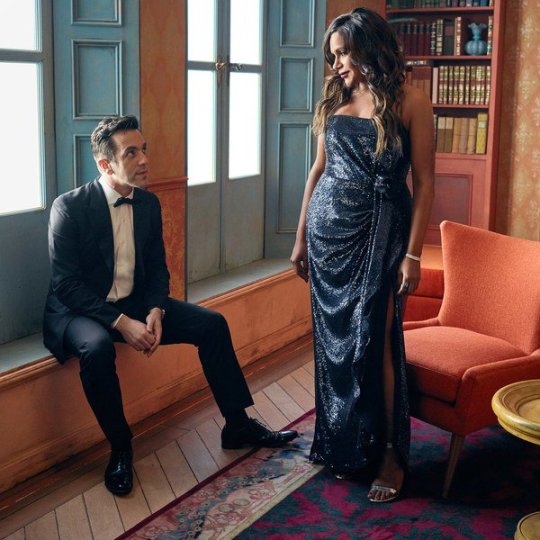




But one tradition that stuck around was the unoffical Black excellence gathering.
You can tell who got there early: Rashida Jones, Jeremy O. Harris, Trevor Noah, John Legend, Nnamdi Asomugha, Shonda Rhimes, Franklin Leonard, Bethan Hardison, Donald Glover, Quinta Brunson and Kerry Washington.
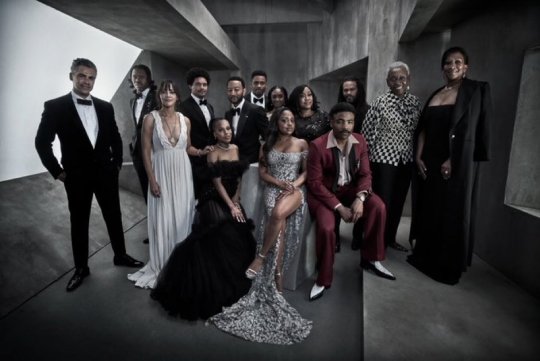
Kenya Barris, Jeffrey Wright, Bethan Hardison, Ava DuVernay, Cynthia Erivo, Danai Gurira, Aldis Hodge, Lizzo (with boyfriend Mike Wright), Kerry Washington, Lena Waithe, Busta Rhymes, Anderson Paak, Jodie Turner Smith, Shonda Rhimes, Usher, Tracee Ellis Ross, Issa Rae, Ice Spice, Chloe & Halle Bailey, Babyface all the way on the side with Jeremy Pope beside him, Shameik Moore, Michelle Buteau, I see Laverne Cox, Tiffany Haddish, Michaela Jae Rodriguez, Leticia Wright, Trevor Noah all the way in the back with Gabrielle Union and Dwayne Wade.
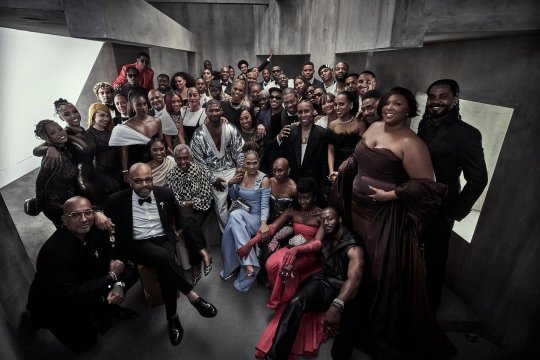
Seeing as Busta was there, I wonder if Trevor rapped for him again.
Too bad the lighting wasn't better.
2023's
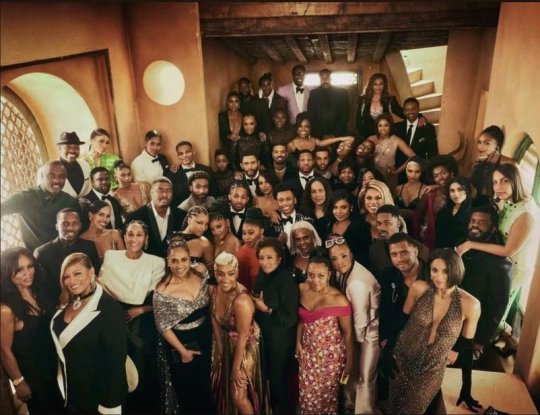
-While not at the Vanity Fair affair- instead seen at pre-Oscar party was Teyana Taylor of A THOUSAND AND ONE (which she was incredible in).
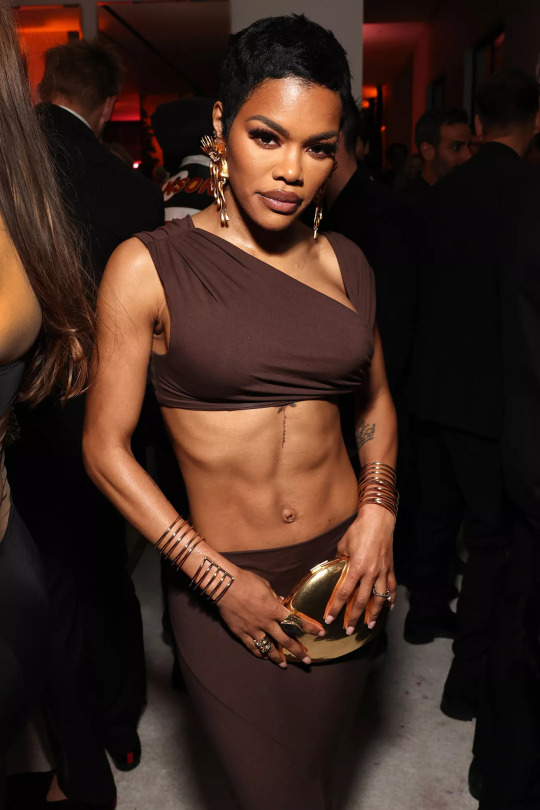
Teyana was seen talking to her costar of the untitled Paul Thomas Anderson film which is slated for an August 2025 release, Leonardo DiCaprio.
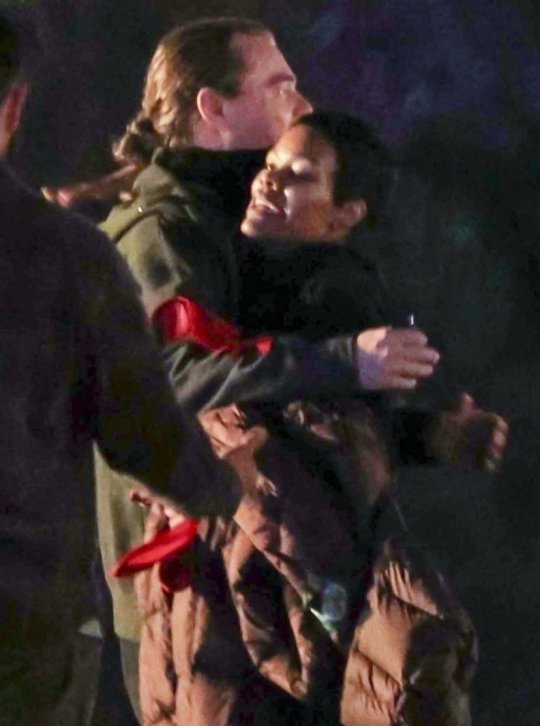

which - of course - has started rumours that they're involved.
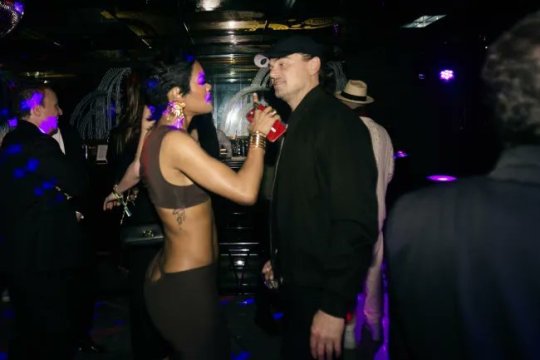
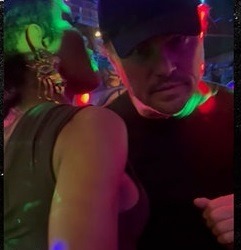
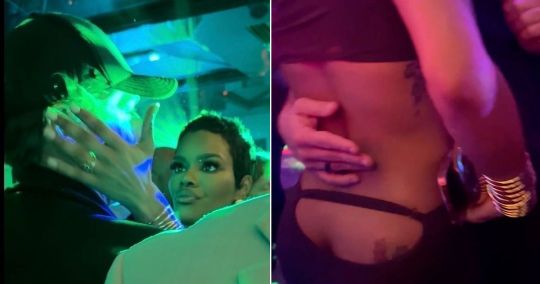
Teyana is too much woman for Leo.

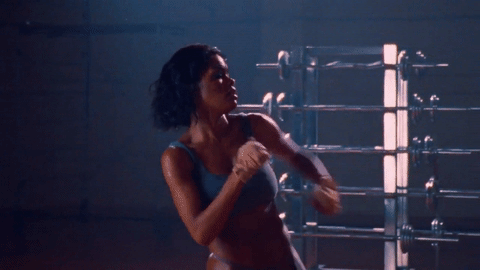
#oscars 2024#oscars#mindy kaling#awards season#black excellence#black celebrities#trevor noah#busta rhymes#tracee ellis ross#kerry washington#gabrielle union#usher#halle bailey#chloe bailey#ice spice#jeremy o. harris#donald glover#quinta brunson#shonda rhimes#danai gurira#aldis hodge#jeffrey wright#lizzo#michaela jaé rodriguez#laverne cox#jeremy pope#teyana taylor#leonardo dicaprio#black actors
10 notes
·
View notes
Text

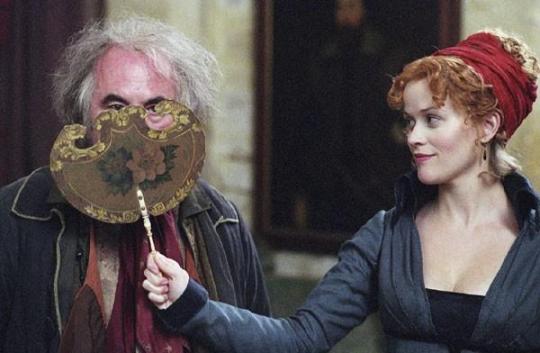
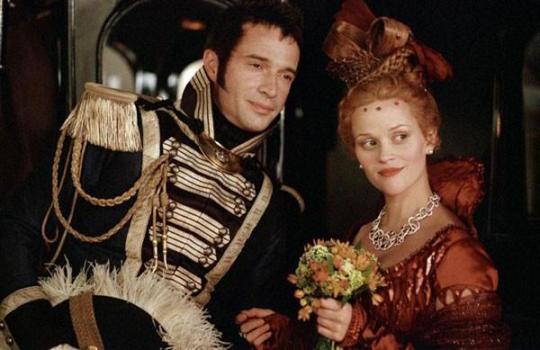
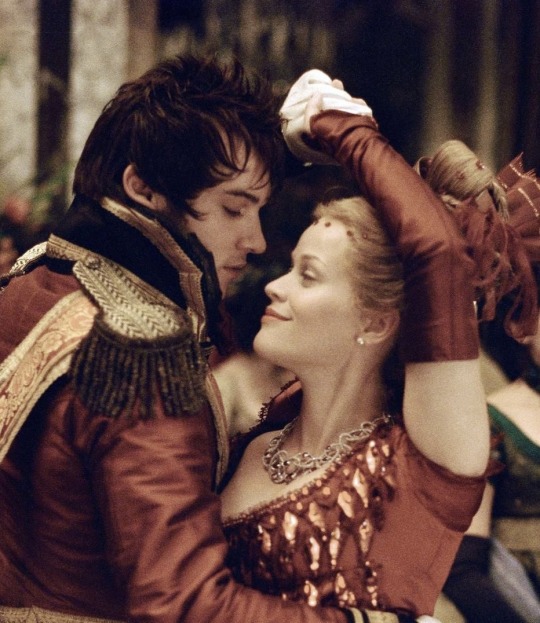
Die Verfilmung von William Makepeace Thackerays Roman mit dem cleveren Titel Vanity Fair ist schwungvoller geraten als die seines Romans The Luck of Barry Lyndon, mäandert aber trotz prächtigster Roben, charmanter Besetzung und unerwarteter Bollywood-Einlagen ob all des gesellschaftlichen Auf- und Abs doch arg dahin.
#Vanity Fair#Reese Witherspoon#Bob Hoskins#James Purefoy#Jonathan Rhys Meyers#Romola Garai#Rhys Ifans#Eileen Atkins#Gabriel Byrne#Jim Broadbent#Douglas Hodge#Tom Sturridge#Film gesehen#Mira Nair#William Makepeace Thackeray
31 notes
·
View notes
Text

Bree Van De Kamp
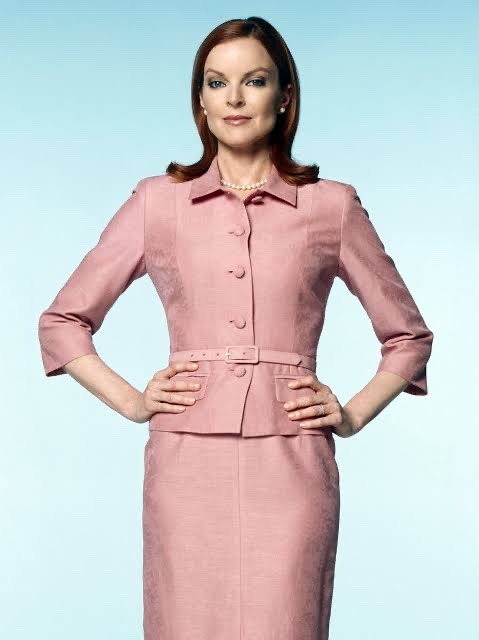
#digitalart#fanart#illustrators on tumblr#art#artedigital#my art#desperate housewives#bree van de kamp#bree hodge#susan mayer#lynette scavo#gabrielle solis#tumblr draw
33 notes
·
View notes
Text
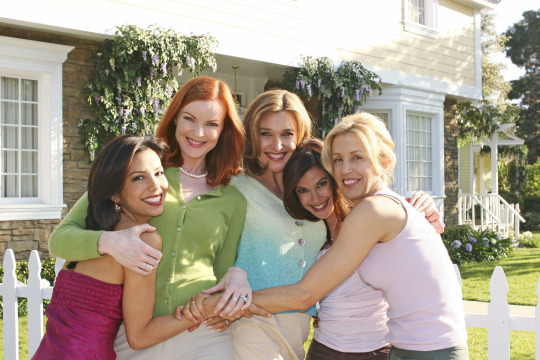
Desperate Housewives
2004 ‧ Drama ‧ 8 seasons
#desperate housewives#gabrielle solis#mary alice young#edie britt#lynette scavo#susan mayer#bree hodge#bree van de kamp#susan delfino
23 notes
·
View notes
Text
Fancast for a live action adaptation of the Jekyll & Hyde musical.
Henry Jekyll and Edward Hyde. Taron Egerton.
Lisa Carew. Samantha Barks.
Gabriel John Utterson. Daniel Radcliffe.
Lucy Harris. Jessie Buckley.
Sir Danvers Carew. Michael Ball
Simon Stride. Richard Fleeshman.
Lord Savage. Douglas Hodge
Bishop of Basingstoke. Robert Carlyle.
Lady Beaconsfield. Hannah Waddingham.
Sir Archibald Proops. Julian Bleach.
General Lord Glossop. Hugh Laurie.
#jekyll & hyde musical#henry jekyll#edward hyde#taron egerton#lisa carew#samantha barks#gabriel john utterson#daniel radcliffe#lucy harris#jessie buckley#sir danvers carew#michael ball#simon stride#richard fleeshman#lord savage#douglas hodge#bishop of baskingstoke#robert carlyle#lady beaconsfield#hannah waddingham#sir prchibald proops#julian bleach#general lord glossop#hugh laurie
5 notes
·
View notes
Video
Finally a second bilingual video episode, this time in Auslan and English! If you missed the first one, here's our interview with Lynn Hou about villages, gifs and children: researching signed languages in real-world contexts in ASL and English.
youtube
youtube
Episode 78: Bringing stories to life in Auslan - Interview with Gabrielle Hodge
Communicating is about more than the literal, dictionary-entry-style words that we say – it’s also about the many subtle ingredients that go into a message, from how you keep your audience in mind to how you portray the actions of the people you’re talking about.
In this episode, your host Gretchen McCulloch interviews Dr. Gabrielle Hodge, a deaf researcher and writer based in Melbourne, Australia. She specialises in research relating to d/Deaf people, signed languages, and communication, and has worked with Auslan and British Sign Language (BSL) in Australia and the UK. We talk about Gab’s work analysing how people tell stories using a mixture of conventional signs (such as “book”) and enactment, aka showing what another person or character did using your body, such as depicting how someone is carrying a heavy book. We also talk about collaborations in multiple countries and assessing what makes a translation accessible to deaf people.
We’re excited to bring you this bilingual episode in Auslan and English! For the full experience, make sure to watch the captioned video version of this episode at youtube.com/lingthusiasm (and check out our previous bilingual episode in ASL and English with Dr. Lynn Hou while you’re there).
Read the transcript here.
Announcements: Since we filmed this interview, Gab has accepted a position as Senior Lecturer in Sign Language Linguistics at the University of Edinburgh. We’re excited to see more great work from her there!
In this month’s bonus episode we get enthusiastic about four science fiction books/series we’re read recently that project interesting future versions of English. We also talk about reading books set in the future but written in the past, and how several of these books now exist in a future that’s in some ways more similar to their imagined futures than the time when they were being written. Join us on Patreon now to get access to this and 70+ other bonus episodes, as well as access to the Lingthusiasm Discord server where you can chat with other language nerds. It’s thanks to our patrons that we’re able to occasionally bring all of you bilingual video episodes like this one. Here are the links mentioned in the episode:
Gabrielle Hodge on Twitter
Gabrielle Hodge’s website
Previously in bilingual Lingthusiasm episodes (ASL and English): ‘Villages, gifs, and children: Researching signed languages in real-world contexts with Lynn Hou’
The Auslan Corpus
Deafness Cognition And Language research centre
The BSL Corpus
You can listen to this episode via Lingthusiasm.com, Soundcloud, RSS, Apple Podcasts/iTunes, Spotify, YouTube, or wherever you get your podcasts. You can also download an mp3 via the Soundcloud page for offline listening.
To receive an email whenever a new episode drops, sign up for the Lingthusiasm mailing list.
You can help keep Lingthusiasm ad-free, get access to bonus content, and more perks by supporting us on Patreon.
Lingthusiasm is on Twitter, Instagram, Facebook, Mastodon, and Tumblr. Email us at contact [at] lingthusiasm [dot] com
Gretchen is on Twitter as @GretchenAMcC and blogs at All Things Linguistic.
Lauren is on Twitter as @superlinguo and blogs at Superlinguo.
Lingthusiasm is created by Gretchen McCulloch and Lauren Gawne. Our senior producer is Claire Gawne, our production editor is Sarah Dopierala, and our production assistant is Martha Tsutsui Billins. Our music is ‘Ancient City’ by The Triangles.
This episode of Lingthusiasm is made available under a Creative Commons Attribution Non-Commercial Share Alike license (CC 4.0 BY-NC-SA).
#linguistics#lingthusiasm#signed languages#auslan#gabrielle hodge#gab hodge#bsl#asl#videos#linguistics videos#Youtube
59 notes
·
View notes
Video
youtube
Zero | “Less Than Zero” | 2024
#zero#reuben barrack#chris cole#dane burman#anthony vega#ben havran#forrest edwards#gabriel summers#vinny dalfio#adam arunski#kurt hodge
0 notes
Note
what are your most wanted pocs and species?
Hello love! Right now species wise we would love to see some werewolves and humans! As for fcs this is just a list of some we'd love to see: AIsha Dee, Aishwarya Rai, Aldis Hodge, Alex Landi, ALex Newell, Alia Bhatt, Alisha Boe, Alp Navruz, Angela Bassett, Anna Diop, Apo Nattawin, Bae Suzy, Baifern Pimchanok, Belissa Escobedo, Berk Cankat, Brenda Song, Brian Michael Smith, Camila Mendes, Candice Patton, Charithra Chandran, Charles Michael Davis, Cierra Ramirez, Clayton Cardenas, Coco Jones, Cody Christian, Daniella Alonso, Daniel Ezra, Danny Ramirez, Danielle Brooks, Derek Luh, Francia Raisa, Gabrielle Union, Gina Torres, Gong Yoo, Harry Shum Jr., Idris Elba, Im Jinah (Nana), Jamie Chung, Jesse Williams, Jessica Matten, Jessie Mei Li, Jordan Gonzalez, Kendrick Sampson, Kofi Siriboe, Kyle Bunbury, Lana Condor, Laura Harrier, Levy Tran, Lizeth Selene, Logan Browning, Maggie Q, Manish Dayal, Mason Gooding, Meaghan Rath, Medalion Rahimi, Melissa O’Neil, Mena Massoud, Michael B. Jordan, Michael Evans Behling, Michael Trevino, Ming-Na Wen, Mint Rachrawee, Nafessa Williams, Naomi Scott, Nathalie Kelley, Nick Sagar, Nikesh Patel, Oscar Isaac, Paapa Essiedu, Pedro Pascal, Phillips Soo, Priscilla Quintana, Regé Jean Page, Reina Hardesty, Ryan Destiny, Sandra Oh, Savannah Lee Smith, Shamier Anderson, Sidharth Malhotra, Sinqua Walls, Sofia Carson, Summer Bishil, Sydney Park, Tati Gabrielle, Victoria Justice, Wakeema Hollis, Zeeko Zaki

1 note
·
View note
Text











Portrait of Maria Dominica Ricci Seated in a Theatre Box Holding Binoculars – Emma Ekwall // Lady Nanne Schrader – Giovanni Boldini // Portrait of Mary Anne Bloxam – Thomas Lawrence // Mrs. Abington as Miss Prue in “Love for Love” by William Congreve – Joshua Reynolds // Portrait of Amalia Schmidt – Karl Vogl // Portrait of a Lady – Josef Abel // Portrait of Theresa Hannack – Adolf Pirsch // Portrait of D. Amélia de Beauharnais – Friedrich Dürck // Portrait of Anna Maria van Heekeren – Charles Howard Hodges // A Girl from Sorica – Ivan Grohar // Self Portrait – Marie-Gabrielle Capet // Never Ever – Lord Huron
#giovanni boldini#thomas lawrence#joshua reynolds#marie-gabrielle capet#marie gabrielle capet#portrait#portrait painting#portraiture#eyes#never ever#never ever song#never ever lord huron#vide noir#lord huron#art#art history#lyrics#lyric art
284 notes
·
View notes